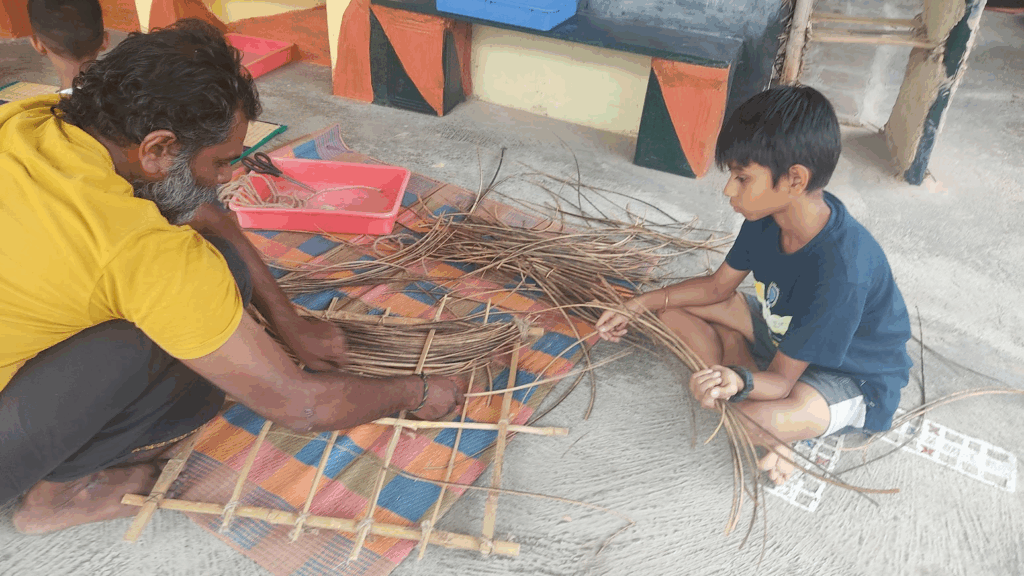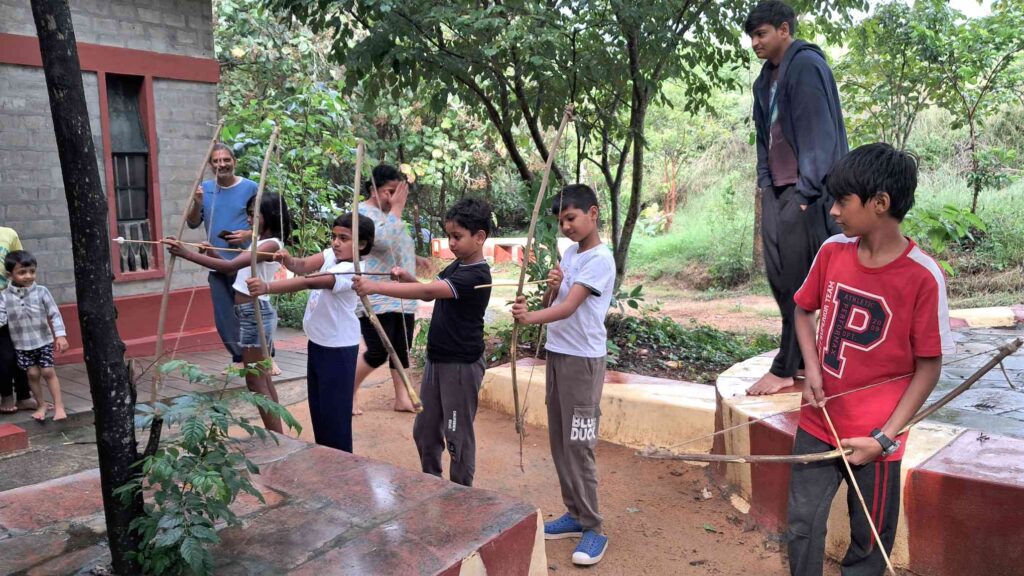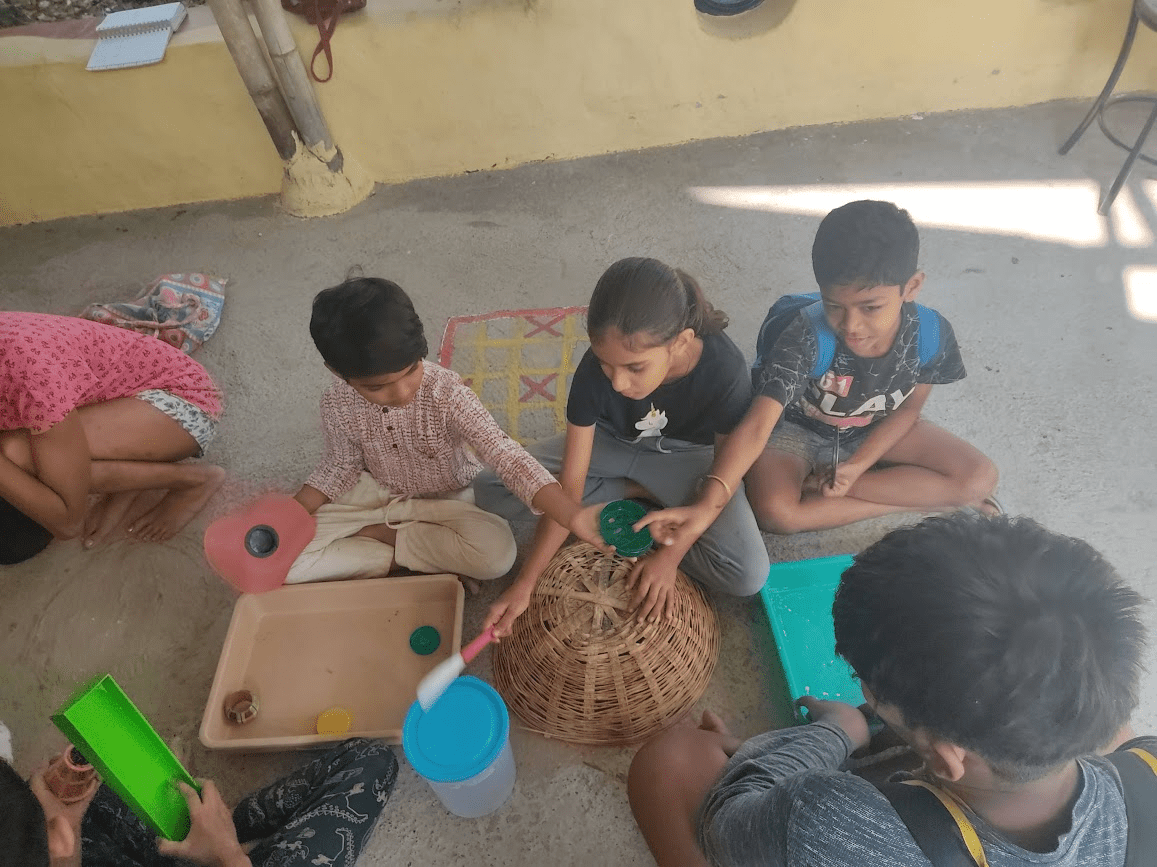If you’re a parent who’s ever worried because your child doesn’t want to read or write, I can relate to you. My 10-year-old hates reading and writing. And as a mom, I was panicking. During his school time every parent-teacher meeting was a repeat: “Your child needs to read and write more. You need to work on this.” I took it to heart, tried to push him. We all know forcing a kid or anyone to do something they hate never works for long.
But here’s the twist: even though my son avoids reading and writing, his vocabulary is amazing. He uses words in the right spots, sometimes without fully knowing their dictionary meaning! That got me thinking—maybe reading and writing aren’t the only ways to learn.
No verbal communication allowed
Let’s play a game – Imagine this: all the parents and adults have to follow instructions from kids, but—here’s the catch—no talking, no writing, no texting. Just gestures, actions, maybe some drawings. How long do you think you’d last? Most of us would be lost. We’re so used to expressing ourselves with words, we forget there are other ways to communicate and learn.
Why do we even need reading , writing?
Back in the day, people shared info by talking, gesturing, or drawing in the sand. Writing only came along when we needed to keep records or pass on knowledge across time and space. Reading became the way to access that info. Over time, reading and writing became the “official” tools for learning, remembering, and communicating.
There is more than one way to learn
Think about toddlers. In their first two years, they learn to walk, talk, eat, recognize emotions, and understand their environment—all without reading or writing. They learn by watching, touching, listening, and playing.
Jump to today: we’ve got videos, podcasts, music, art, and even AI tools that help us learn and share ideas. My grandma didn’t learn to read and write until she was 40, but she could recite religious texts by heart and managed her life just fine. Our grandparents learned by doing—through work, play, and real life, not just reading and writing.
Reading and writing are tools for learning, not the foundation. They help us record, remember, and communicate, but they’re just part of a huge toolbox. Like any other toolbox children don’t have to use all the tools at once. They pick what works best for them.

For example:
- Visual learners might understand better through pictures, videos, or drawing their ideas.
- Auditory learners grasp concepts through songs, stories, or discussions.
- Kinesthetic learners need to move, build, or act things out to really get it.
So, if your child hates writing essays but loves telling stories or making videos, that’s their tool shining through! Read more about different learning styles.
Let’s Help children Build Their Learning Toolbox
Our role is to support children in adding tools to their toolbox and empower them to choose the right ones for the task. Here’s what that looks like:
- Encourage different ways to learn: If your child struggles with writing, maybe they can type or record their thoughts instead. My son prefers typing over handwriting—it’s faster and less frustrating for him.
- Use play to build skills: Play isn’t just fun—it’s learning in disguise. When kids play soccer, they’re learning teamwork, strategy, and coordination. When they build with blocks, they’re exploring math and engineering concepts.
- Incorporate music and movement: A child who struggles with reading might remember a song’s lyrics or use rhythm to learn patterns. Dancing or acting out stories helps them understand emotions and narratives.
- Leverage technology: Audiobooks, podcasts, and educational apps can teach vocabulary, history, or science without the pressure of reading pages.
- Hands-on projects: Cooking teaches measurements and following instructions. Gardening shows biology and patience. Crafting builds fine motor skills and creativity.
The Power of Play

Play isn’t just fun—it’s serious learning. When kids play, they explore, imagine, make decisions, and solve problems. They develop physically, emotionally, socially, and cognitively—all without a worksheet in sight. Through play, they pick up language, learn how stories work, and even build early math skills. And the best part? They’re learning because they want to, not because someone’s making them.
Play brings three big things to learning:
- Autonomy: Kids decide what and how they want to play.
- Competency: They practice skills and get better over time.
- Connection: They interact with others and learn social cues.
Back to my son’s story. We found ways to work with his strengths, not against them. He types instead of writes. He reads when he needs to, but he also learns through videos, conversations, and hands-on projects. He uses whatever tool works best for the job—and that’s how real learning happens. As he grows, he’ll probably get better at all the tools or few tools, but right now, he’s thriving in his own way.
Reading and writing are important, sure. But they’re just one set of tools in a giant toolbox full of ways to learn. Open up their toolbox—let them paint, build, play music, act, move, talk, and yes, read and write when it makes sense for them. So next time you worry about your child’s reading or writing, remember: learning is way bigger than that. It’s about understanding, exploring, connecting, and growing in ways that make sense for your unique kid. Check here the story of Dhrupad and his reading writing journey
If you want your child to love learning, don’t just hand them a book or a pencil—give them the freedom to explore their way. That’s the real gift. Check out this video.
